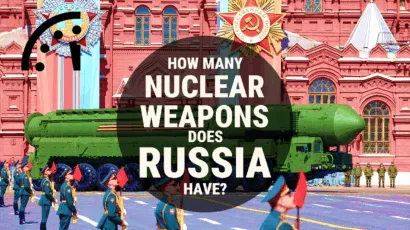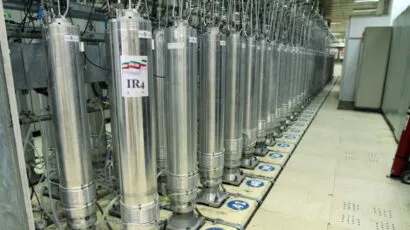Escalating to de-escalate with nuclear weapons: Research shows it’s a particularly bad idea
By Daniel R. Post | February 9, 2024
 Illustration by Sangoiri / Dreamstime
Illustration by Sangoiri / Dreamstime
The growth of Chinese nuclear capabilities and the ongoing Russian invasion of Ukraine have brought “great power competition” back to the center of United States national security strategy. With that competition have come calls for increasing US tactical nuclear weapons capabilities. A primary justification for increasing these capabilities is that they provide additional options at different potential levels of conflict escalation and can help stop a conventional-turned-nuclear war before it becomes a full-scale nuclear exchange. In fact, many in the US strategic community believe that “escalate to de-escalate” strategies—which threaten early and significant escalations, such as limited nuclear use, followed by demands for immediate war termination—are a desirable approach for nuclear deterrence, and a viable option if deterrence fails.
But how likely is it that even a “limited” nuclear war could be kept to a level at which the benefits of fighting outweigh the costs if deterrence fails? Could escalating from conventional weapons to nuclear ones have a de-escalatory impact on a conflict? Should the United States or other countries pursue the development of relatively low-yield nuclear weapons for this purpose? My research, as well as other recent work, strongly suggests that this kind of thinking is theoretically unsound, fraught with danger, and likely to drastically increase the risk of escalation in a nuclear conflict if attempted.
What is escalating to de-escalate? In this strategy, escalation is a deliberate action taken primarily for the purpose of ending a conflict without any further increase in the intensity or level of fighting. The strategy aims to achieve de-escalation by signaling capability and commitment. Escalate to de-escalate relies on psychological responses wherein the other side comes to see the conflict as too costly to continue at the new potential level of violence. The goal of escalation is not to completely disable or defeat the enemy, but rather to compel the adversary to decide to end the conflict—on terms set by the escalating state. The strategy is meant to be both bold and restrained.
When escalation involves a nuclear attack, the attacker is expecting to increase the likelihood of coercive advantages or to end the war altogether. Nuclear weapons generate and heighten fear, increase the risk of further escalation, and are the ultimate signal of strength and resolve.
A Russian strategy? Much of the contemporary discussion about escalating to de-escalate is rooted in an assertion by experts that it is an accurate interpretation of Russian strategy. The 2018 version of the United States’ Nuclear Posture Review, for example, stated that “Russian strategy and doctrine emphasize the potential coercive and military uses of nuclear weapons. It [sic] mistakenly assesses that the threat of nuclear escalation or actual first use of nuclear weapons would serve to ‘de-escalate’ a conflict on terms favorable to Russia.”
Katarzyna Zysk, a senior fellow at the Atlantic Council, has argued that this assessment is essentially correct, writing that “Russia reserves an option of a limited nuclear use at a scale … in order to compel the adversary to refrain from further action and back off. As other authoritative Russian experts acknowledge, this basic logic is widely accepted in Russia.” The primary objective of nuclear use, Zysk writes, would be political: “The concept aims therefore to highlight ‘the asymmetry of interests’ and manipulate the enemy’s perception of risk and cost to the point where it is no longer willing to bear them and would accept the political terms of capitulation ending the conflict.”
Others echo this understanding. Kevin Ryan of Harvard’s Belfer Center for Science and International Affairs, for example, writes simply: “Russia does plan for using nuclear strikes to deescalate (that is, to end) and win conflicts. So does the United States.”
However, some experts disagree with this assessment of Russian strategy. Their arguments typically acknowledge Russian willingness to use nuclear weapons in a limited fashion under certain circumstances but characterize escalate to de-escalate as too simple an interpretation, incomplete, or inaccurate. Instead, these experts say, Russian plans to use nuclear weapons should be considered as part of a broader strategic deterrence, counter-escalation, and warfighting strategy.
For example, Michael Kofman and Anya Fink, both analysts for the nonprofit Center for Naval Analyses, argue: “The simplistic view characterizing Russian strategy as ‘escalate to de-escalate’ or ‘escalate to win’ is not correct, but neither are the commonly voiced counterarguments that suggest no Russian strategy for limited nuclear use exists, or that it was simply a stopgap measure born out of conventional inferiority.”
There is no reason to assume that escalate to de-escalate strategies are exclusive to Russia. Indeed, NATO strategy for much of the Cold War was exactly this strategy. Scholars have hinted at the potential for other states to employ escalation strategies, whether by conventional or nuclear means—for example, in a potential US-China conflict or a conflict between North Korea and a US-South Korean alliance. For this reason, it is important to explore the merits of the strategy itself, regardless of who may or may not have such a strategy.
How well does escalate to de-escalate work? Escalate to de-escalate strategies appear at first to be logically appealing. Upon deeper investigation, however, the potential for the strategy’s success is likely to be outweighed by the potential for its failure. The high chance of failure lies in potential escalation outcomes on the receiving side of the escalating attack.
Escalate to de-escalate has the potential to achieve one of two broad, countervailing reactions among decision makers on the receiving side: They must either choose to award a coercive “win” to the attacker or punish the attacker through continued (perhaps increased) resistance. The incentives for the receiving side to impose belligerence costs in the form of continued resistance or counter-escalation will usually outweigh incentives to award a coercive advantage to the attacker.
Why might the receiving side capitulate? Escalate to de-escalate may succeed by instilling fear and uncertainty among the receiving side’s leadership or citizenry; by increasing risk perceptions; by conveying new information to the receiving side; by adding a level of attacker credibility not achievable through a threat alone; or by demonstrating attacker resolve and capability.
If the attacker simultaneously demonstrates the appropriate amount of restraint, the receiver may decide to concede. In this case, the receiver would calculate that the price of further fighting over the current limited aims is too high, and that giving in now does not set them up to give more in the future.
These positive outcomes, however, are theoretically counteracted—and upon empirical investigation, very often outweighed—by incentives to continue to resist. There are several reasons for this. First, escalation is likely to be a public and observable strategy, especially if it involves using a nuclear weapon, and giving in to such a demand comes with higher reputational costs than does refraining from retaliation. This exacerbates worries over precedent setting and future vulnerability.
Second, the receiving state may not get the intended signal, or may misinterpret, misunderstand, mistrust, or misperceive the intended signal. This sort of misperception has long been identified as a problem in international relations. Additionally, if the escalation violates an important norm—for example, the non-use of nuclear weapons, or the targeting of civilians—this effect may be amplified. In this situation, decision makers on the receiving side are likely to be willing to accept more risk to resist the escalation and prevent further losses.
A third reason escalate to de-escalate may result in continued resistance is that the attempt heightens the perceived stakes. In addition to the original stakes of the conflict, once a “red line” has been crossed (particularly the nuclear threshold), the stakes may increase dramatically. This again exacerbates concerns over precedent and reputation.
Can nuclear weapons help? The answer is likely no. Escalate to de-escalate may fail often in a nuclear setting because a limited nuclear attack against a nuclear-armed adversary will aggravate reputational and precedent-setting concerns. Because the stated purpose of nuclear weapons is (at a minimum) to deter a nuclear attack, when a nuclear state gives in to a limited nuclear attack the entire purpose of its nuclear deterrent has been negated. Giving in to a nuclear attack, then, drastically weakens future deterrence.
Also, escalating with nuclear weapons is likely to produce stronger negative effects than conventional attacks, because violating the norm of nuclear non-use may trigger stronger reactions than violating other norms of armed conflict (like killing unarmed civilians) that are routinely violated and are not as black and white as nuclear use. The rarity, visibility, and distinctiveness of a nuclear attack will make the violation of the norm more significant and will cause the receiving state to distrust the norm-breaking attacker.
Third, nuclear weapons cause effects that other types of weapons do not, such as radioactive fallout, electromagnetic pulse damage, and increased blast and fire impacts. These capabilities add an immense amount of uncertainty to a nuclear attack. This uncertainty will increase the incentives for decision makers to engage in worst-case scenario planning.
Finally, states that possess nuclear weapons are expected to be responsible users and possessors of the ultimate means to peace and security. Nuclear strategists, as well as the general public, particularly those optimistic about the merits of nuclear deterrence, expect nuclear states to behave rationally and ethically, knowing the power they possess. This makes it more likely for the receiving side to think that the aggressor who first uses nuclear weapons has begun to behave irrationally or has abandoned these norms.
In sum, using nuclear weapons will increase incentives for the receiving state to continue to resist the attacker.
Slim chance of success. My ongoing research strongly supports claims regarding the likelihood that escalate to de-escalate will fail. I have conducted several surveys among two US populations (a general population and a military population) and found that respondents are overwhelmingly more likely to favor continued resistance when placed on the receiving end of escalate to de-escalate attempts. In the civilian sample, only 30.6 percent of respondents chose to de-escalate in response. In the military sample, that number was a measly 6.9 percent.
I have also explored the largest collection of elite-level wargames and crisis simulations to investigate the theoretical intuitions expressed above. In past wargames and crisis simulations, only five of 55 instances of escalate to de-escalate succeeded, for an overall success rate of less than 10 percent.
Using nuclear attacks to escalate conflict is an extremely risky and dangerous proposition. Anyone concerned about nuclear risk should pay close attention to appeals for nuclear escalation to de-escalate, or even conventional escalation against a nuclear power. The logic of such a strategy is flawed, and the theoretical expectations point strongly toward incentives for the receiver to continue to resist and possibly counter-escalate.
If both sides in a conflict subscribe to escalate-to-de-escalate-type thinking, the logical outcome is an endless escalatory cycle. This outcome is distinctly at odds with a strategy aimed at de-escalation. Scholars and practitioners should beware of seeing a limited nuclear attack as some sort of resolve-demonstrating “trump card.”
Editor’s note: The views expressed in this essay are the author’s alone and do not reflect or endorse the views of the US government, the Defense Department, or the US Navy.
Together, we make the world safer.
The Bulletin elevates expert voices above the noise. But as an independent nonprofit organization, our operations depend on the support of readers like you. Help us continue to deliver quality journalism that holds leaders accountable. Your support of our work at any level is important. In return, we promise our coverage will be understandable, influential, vigilant, solution-oriented, and fair-minded. Together we can make a difference.
Keywords: Escalate to de-escalate, limited nuclear war, low-yield nuclear weapons, strategy
Topics: Analysis, Nuclear Weapons, Voices of Tomorrow
















The author is right that if both sides in a nuclear confrontation have an “escalate to de-escalate” strategy, we can kiss them both, and many of the rest of us, goodbye. The more subtle problem is if both succumb to the argument that “escalation dominance” is needed at each rung of the ladder of escalation, so the other side won’t climb that rung. This has the same consequence, but slower. Both sides build up to a crescendo of weaponry of absurd proportions, so if either seems to reach for his gun the whole world is destroyed in a flash… with… Read more »
The implied threat of nuclear weapons is an aspect of “escalate to de-escalate” – Garthoff mentions the US under Nixon and Kissinger using such a strategy to threaten India during the Bangladeshi War of Independence. The consequences? India decides to join the Nuclear Club to prevent any further such threats – “escalate to de-escalate” has been thus already proven to be pro-proliferation, with the likelihood of less-stable states getting access to nuclear weapons. “escalate to de-escalate” is about as helpful as amputating someone’s head to cure a headache.